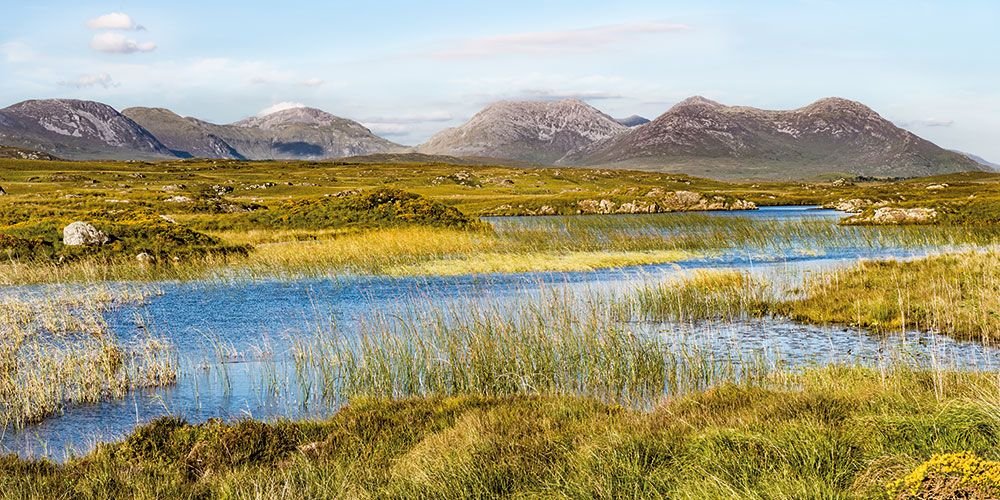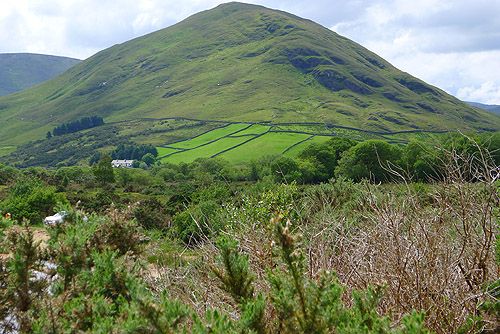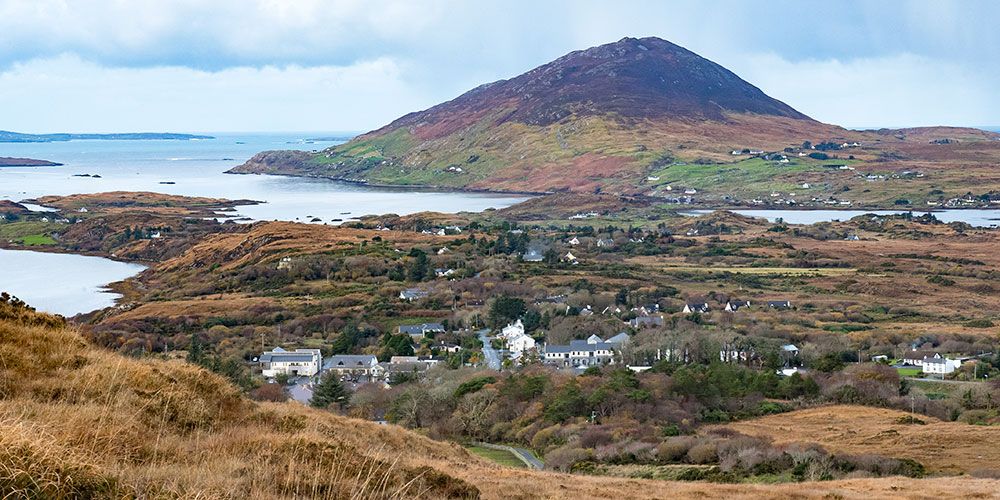
Mountains
Climbing the mountains of Connemara can be considered as an easy task by mountaineers accustomed to more challenging peaks: being ancient geological formations of quartzite, the average height of these peaks is about 700-800 meters, with the only exception of Mount Gable (1370 mt.), which separates the lakes Corrib and Mask. We must remember, however, that here the weather conditions are subject to sudden change (for the worse), also taking into account the particularity of the land, often composed of soft turf, on which walking can be difficult and very tiring. In every Irish sports and souvenirs shop, you can easily find a series of detailed maps to organize your excursions, as well as highly qualified guides who will accompany you with competence and sympathy, also providing news on geology, flora, and fauna.
A short list of the main mountain ranges of Connemara:
Twelve Bens - Na Beanna Beola The Twelve Bens are a mountain range consisting of a series of peaks with an average height comprised between 400 and 729 meters; their silhouette can be practically seen from all corners of Connemara, being the natural border between the North and South of the region. Climbing doesn't imply particular difficulties and experienced walkers can easily explore them all in one day. It's remarkable that - despite the name - people don't know which 12 peaks actually make up the chain, even because in the area there are about a dozen mountains that can claim the title of Binn = Ben = mountain. This arbitrary classification was written by Roderick O'Flaherty in 1684, but the Irish wittily call them Beanna Beola, or Beola's peaks, regardless of the number ... For those wondering who Beola was, we must state he was a giant, head of the clan Fir Bolg, whose name is also echoed in the village of Toombeola. A special mention goes to the highest peak of the range, the Ben Baun - Binn Bhan or white mountain, which is 729 meters high, so deserving the magniloquent epithet of Mont Blanc
MaamTurk - Sleibhte Mham Toirc Not so well-known as the aforementioned Twelve Bens, these mountains are located in North Connemara, roughly between Lake Inagh and the Corrib. With a maximum height of 667 meters, they are a pleasant and quite an undemanding walk for all climbers.
Maumtrasna - Mam Trasna With its 682 meters it is the highest peak of the Partry Mountains, which overlook Lough Mask; Maumtrasna dominates the pretty Lough Na - Fooey. In this area, the mountain is sometimes called with a more ancient name, Formnamore - Formna Mór , "the great shoulder".
Mweelrea - Maol Reidh This mountain is the highest of the homonym range (814 meters); it rises from the northern shores of Killary Harbour, and for this reason, it already lies in County Mayo. Delphi, a village not far from Leenane, represents the starting point for the ascent.
Errisbeg Hill - Iorras Beag More a hill (300 meters) than a mountain, this mound stands alone near the village of Roundstone, many botanical rarities such as Mackay and San Dabeoc heather grow on its slopes.
Tully Mountain Another hill of only 356 meters, which rises from Ballinakill Harbour, just behind Tully Cross. Beautiful views of the coast, including the islands of Inishturk, Inishbofin, Clare and Achill, can be enjoyed from this point on clear days.
We close our roundup with the famous Diamond Hill, 442 meters, the highest western peak of the Twelve Bens. From its summit, easily accessible from the Connemara National Park, one can enjoy magnificent 360-degree views toward Lough Kylemore, the promontory of Renvyle and the highest peaks of Beanna Beola.




